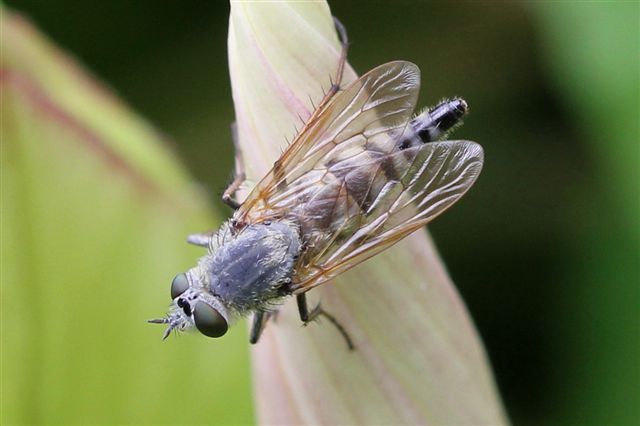Diptera.info :: Identification queries :: Diptera (adults)
|
unknown Therevid
|
|
| jeremyr |
Posted on 12-08-2012 16:00
|
|
Member Location: Tottenham Posts: 577 Joined: 18.05.12 |
T. fulva at a guess? At least it's not the hairy one I've found nearby a couple of times. North London
jeremyr attached the following image:  [38.96Kb] |
|
|
|
| Paul Beuk |
Posted on 13-08-2012 10:27
|
|
Super Administrator Location: Netherlands Posts: 19403 Joined: 11.05.04 |
Acrosathe annulata
Paul - - - - Paul Beuk on https://diptera.info |
| jeremyr |
Posted on 17-09-2012 21:12
|
|
Member Location: Tottenham Posts: 577 Joined: 18.05.12 |
Hi Paul, I wondered how certain you might be of this id, as it appears to be a coastal species, and this I found in a north london park? I have several other pics of it best wishes, Jeremy |
|
|
|
| tristram |
Posted on 17-09-2012 21:58
|
|
Member Location: Reading, UK Posts: 1333 Joined: 27.06.10 |
From British Soldierflies and their Allies, Stubbs and Drake, 2001, page 390: "A. annulata is likely to be found on most coastal dunes on mainland Britain. ... There are some inland records from other sandy districts, such as the Breck district of East Anglia and Hartlebury Common, Worcestershire, but in these days of intensive agriculture it is likely that such occurrences are exceptional." Is the north London park noticably sandy? Edited by tristram on 17-09-2012 21:58 |
| andrewsi |
Posted on 17-09-2012 22:26
|
|
Member Location: Pocklington UK Posts: 216 Joined: 15.08.09 |
I thought that the black shiny patch on the frons made it more likely to be a Thereva? Ian |
|
|
|
| jeremyr |
Posted on 17-09-2012 23:11
|
|
Member Location: Tottenham Posts: 577 Joined: 18.05.12 |
No noticeable sand, lots of earth movements and the digging of a new lake and river channel though. This fly was along the old polluted tree-lined river channel filled in this year and allowed to grow over. I don't know if sand was used in the re-shaping but lots of heaped up dredged silty stuff lying around Jeremy |
|
|
|
| blowave |
Posted on 17-09-2012 23:51
|
|
Member Location: LINCOLN, UK Posts: 3151 Joined: 27.06.07 |
Surely this is Thereva? Female frons with one or two shining black patches -> Thereva http://home.hccne...vidae.html More photos would help, if you can crop closer even better. Check the key for Thereva. Janet http://cubits.org... |
| jeremyr |
Posted on 18-09-2012 06:21
|
|
Member Location: Tottenham Posts: 577 Joined: 18.05.12 |
Janet, here are some of the other pictures http://www.ispot.org.uk/node/295187 you appear to have pointed out that it's a female, so thanks for that Jeremy |
|
|
|
| blowave |
Posted on 18-09-2012 11:08
|
|
Member Location: LINCOLN, UK Posts: 3151 Joined: 27.06.07 |
Jeremy, the males have eyes which meet in the middle.  I keyed it out to Thereva nobilitata, that seems to depend a lot on how you interpret the black frons spot according to what it says in the keys. Taking the alternatives as opposed to the clues which led to T. nobilitata in each couplet seemed not to fit . Try it yourself, then look at the examples of the black spots on the female specimens to see if it looks correct then if not go back and re-interpret what you have read. One thing which seems confusing is whether there is one or two spots, it does look to be connected so I'd say one. Then the depth of the spots confuses, but if you go to the narrow option it doesn't fit so it would seem that each side of the spot as if separated is about as broad as it is high. Don't rely on me though! 
http://cubits.org... |
| Jump to Forum: |













